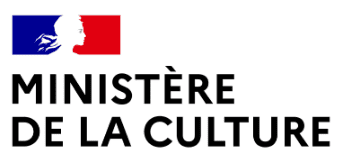In the bluish light of dawn, mysterious silhouettes emerge from the water, then vanish
one by one on the ground. A woman pushes the door of a building open. It is the famous Hotel Belvédère built in the 1930s in Cerbère on the Spanish border, where Cham Lavant has chosen to set the scene of his first film. An elegant fable with old-fashioned charm, Entre les Rails [In between the Rails] is a variation on the theme of transition and here introduces a treasure trove of faded memories. Singing performances and choreographed circular steps bring the place back to life to the sound of enchanting choirs and heels tapping on the ground. At the foot of this timeless stone liner, the train continues to pass by.
(Louise Martin-Papasian)
- 2021
- 2021
Entre les Rails In between the Rails
Cham Lavant
Interview with Cham Lavant
The main part of the film takes place at the Hotel Belvédère du Rayon-Vert, built in Cerbère in the 1930s. Why did you choose this place? Did you specifically write for it ?
Yes, I wrote the film for this place.
Firstly, I was interested in its history The Belvedere was built by Léon Baille, in Cerbère, between 1928 and 1932. At that time, the city was booming economically thanks to its position on the Spanish border. The difference in track gauge between France and Spain meant that the same trains could not run across both countries. An entire fleet of orange ferries were used to transfer oranges from one train to another. Travellers wanting to cross the border had to wait overnight for a visa to enter Spain. Wealthier travellers would spend the night at the Belvedere, which at the time boasted a casino, an Italian-style theatre stage and a roof-top tennis court.
The geographical location of the hotel is interesting, it stands above the railway track between the mountain and the sea. It looks like an ocean liner ready for boarding.
The fact that the hotel is located in Cerbère appealed to me. The town is the final link to Spain, guardian of the underworld. Black, dark and deserted, the city feels like the end of the world. Today, the town counts a population of about 1,000, but it still houses this disproportionately large station. It has a mirror station with its twin Spanish border town, Portbou, where Walter Benjamin ended his life to escape Nazism.
When I first entered the hotel in 2015, I was amazed that such a place should still exist today. A famous Andalusian flamenco dancer, Concha Vargas, was performing that evening with her entire family. Captivated by the combination of flamenco and the hotel, as if stunned, hypnotised, I found myself following Concha to her village near Seville, where I stayed with her for a few weeks.
In January 2020 ,after graduating from the Beaux-Arts, I visited the Belvedere and decided to create a work, a film for the place.
Men and women find themselves in a huis-clos within the hotel, which they inhabit with their singing and mysterious presence. How did this project come about? What does the presence of these different generations tell us?
The idea was to create a journey through the place, travelling through different worlds, different eras. Initially the project was meant to be a performance, but due to lockdown measures it became a film.
These different generations inhabit the place, which is not known to be a hotel. It is as if the past does not exist here, as if time were suspended. All the people are alone, even when they are together. Nothing can stop their trajectory. There are no disruptive elements in the film. The viewer is omniscient, invisible, and follows the journey.
It’s as if we were surrounded by ghosts. What happens when the spectator is not there? Is the trajectory an eternal recommencement?
Your film is made up of living tableaux set in the different areas of the hotel, with a pronounced pictorial approach, particularly for the bath scene. What inspired this construction and how did you develop these sequences?
Working with the hotel as it is. Everything is filmed in natural light. The performers blend into their surroundings. The costumes were important for the place, their patterns, their colours. That’s why I designed them myself. The bath scene is the only one for which the room was rearranged, with props used to create the desired atmosphere.
The protagonists sketch out movements and dance steps, it’s sometimes closer to a performance – which is part of your repertoire – with references to flamenco. Can you comment on this approach?
Yes, I wanted to bring in dance without it being danced. It’s more of a dance of movement, like a chess game. Flamenco is present in the folding scene, punctuated by clacking heels. I also wanted to combine flamenco with butoh, as I did later in the pink room for this triangular choreography.
This is your first film as a director; you worked with a large number of actors and actresses. How did it go?
Exciting and crazy. First, the Belvedere owner decided a week before the shoot that he didn’t want us to film there anymore. Then he agreed to three days of shooting without any rehearsals. Fortunately the Mayor of Cerbère allowed us to rehearse in the gymnasium, flirting with government bans. I had to mentally reconstruct the hotel rooms. For most of the performers it was the first and only rehearsal for the 3 days. I found these constraints interesting. The performers discovered the location at the same time as the shooting. For the image and sound it was more difficult to have to do without a location scouting. It was an amazing adventure.
As for the actors, I had already worked with some of them for performances in Paris. Otherwise I met people on the train, in Cerbère and in neighbouring towns. It was incredible, bringing together these twenty performers between the ages of 9 and 90 years old! The whole team stuck together until the end.
Interview by Louise Martin Papasian






